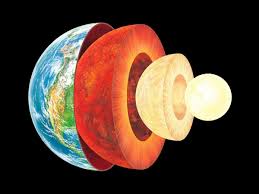What are the four layers of the crust?
1 Answer
I assume you mean 'what are the four layers of the Earth?'. I might be wrong, but that question makes more sense to me, so I'll roll with it and you can tell me if I'm wrong later.
The outermost layer that we live on is the crust. It is very thin, only
Most of the volume of the Earth is the mantle, which is largely magma, molten rock inside the Earth. When magma erupts out of the crust it becomes lava. By weight, magma contains around
Surrounded by the mantle is the outer core, a viscous liquid of molten nickel and iron compounds, known as NiFe. The temperature of the outer core ranges from around
On the very inside of the Earth is the inner core. This is the hottest part of the Earth, though it is not actually a liquid, unlike the mantle and outer core. This is because, even though the heat is so high, and ordinarily it should be a liquid, the pressure from the rest of the Earth bearing down on it compresses it into a solid ball of iron and nickel. It is around


